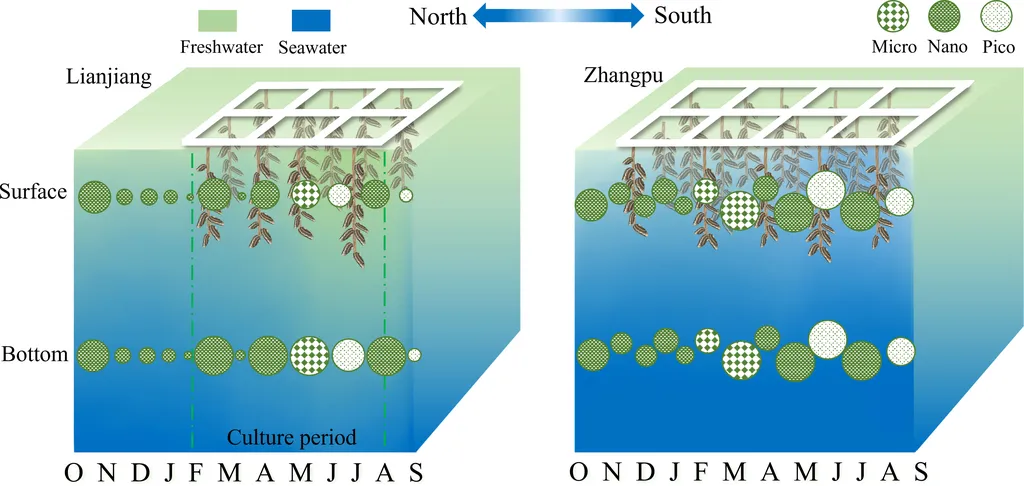In the bustling waters of Haizhou Bay, a delicate dance between shellfish and phytoplankton is unfolding, one that could reshape the future of aquaculture and marine ecosystem management. A recent study published in *Progress in Fishery Sciences* and led by MENG Rongzhao from the School of Fisheries and Life Science at Shanghai Ocean University, has shed light on this intricate relationship, offering valuable insights for the agriculture sector.
Phytoplankton, the tiny powerhouses of marine ecosystems, are not just passive participants in the aquatic world. They are rapid responders to ecological shifts, playing a crucial role in maintaining the health and stability of these systems. In China, a global leader in aquaculture, phytoplankton serve as the primary food source for shellfish, which in turn regulate phytoplankton biomass through filter feeding. This symbiotic relationship is a cornerstone of marine ecosystems, and understanding it is key to sustainable aquaculture practices.
The study, conducted in Haizhou Bay, explored the effects of mixed oyster and mussel cultivation on phytoplankton community structure and the influencing environmental factors. The researchers found significant seasonal and regional variations in both phytoplankton abundance and diversity. Notably, the abundance of phytoplankton was higher in the aquaculture areas, particularly in Area 1, which was significantly influenced by terrestrial inputs.
“Shellfish activities can influence the composition of the phytoplankton community structure,” said MENG Rongzhao, the lead author of the study. This finding is crucial for assessing the ecological carrying capacity and planning shellfish farming activities, ensuring a harmonious balance between marine economic development and ecological preservation.
The study also revealed that the dominant phytoplankton species were affected by environmental factors such as temperature, pH, and nutrient concentrations. In particular, the abundance of dominant species positively correlated with nutrient concentration in July, September, and October. This information is invaluable for aquaculture planning and management, as it allows for a more precise understanding of how environmental factors can be manipulated to support phytoplankton growth and, consequently, shellfish health.
The commercial implications of this research are substantial. By understanding the relationship between shellfish farming and phytoplankton communities, aquaculture businesses can optimize their practices to enhance productivity and sustainability. This could lead to increased yields and improved water quality, benefiting both the environment and the bottom line.
Moreover, the study’s findings could shape future developments in the field of marine ecosystem management. By providing a basis for shellfish culture planning and aquaculture capacity assessment, this research paves the way for more informed decision-making and strategic planning in the agriculture sector.
As we look to the future, the delicate dance between shellfish and phytoplankton in Haizhou Bay serves as a reminder of the complex interdependencies that underpin our marine ecosystems. By understanding and harnessing these relationships, we can pave the way for a more sustainable and prosperous future for aquaculture and the agriculture sector as a whole.

